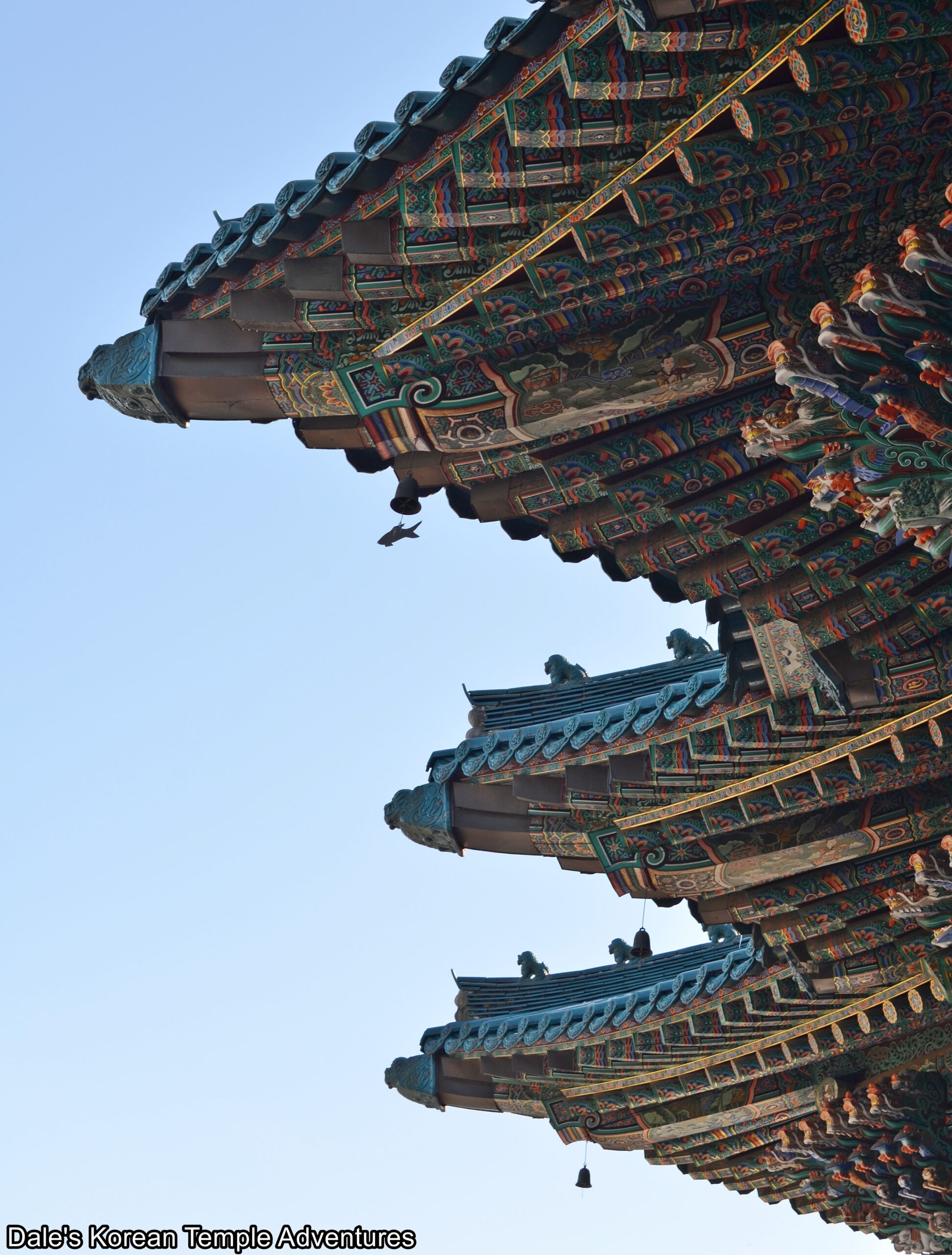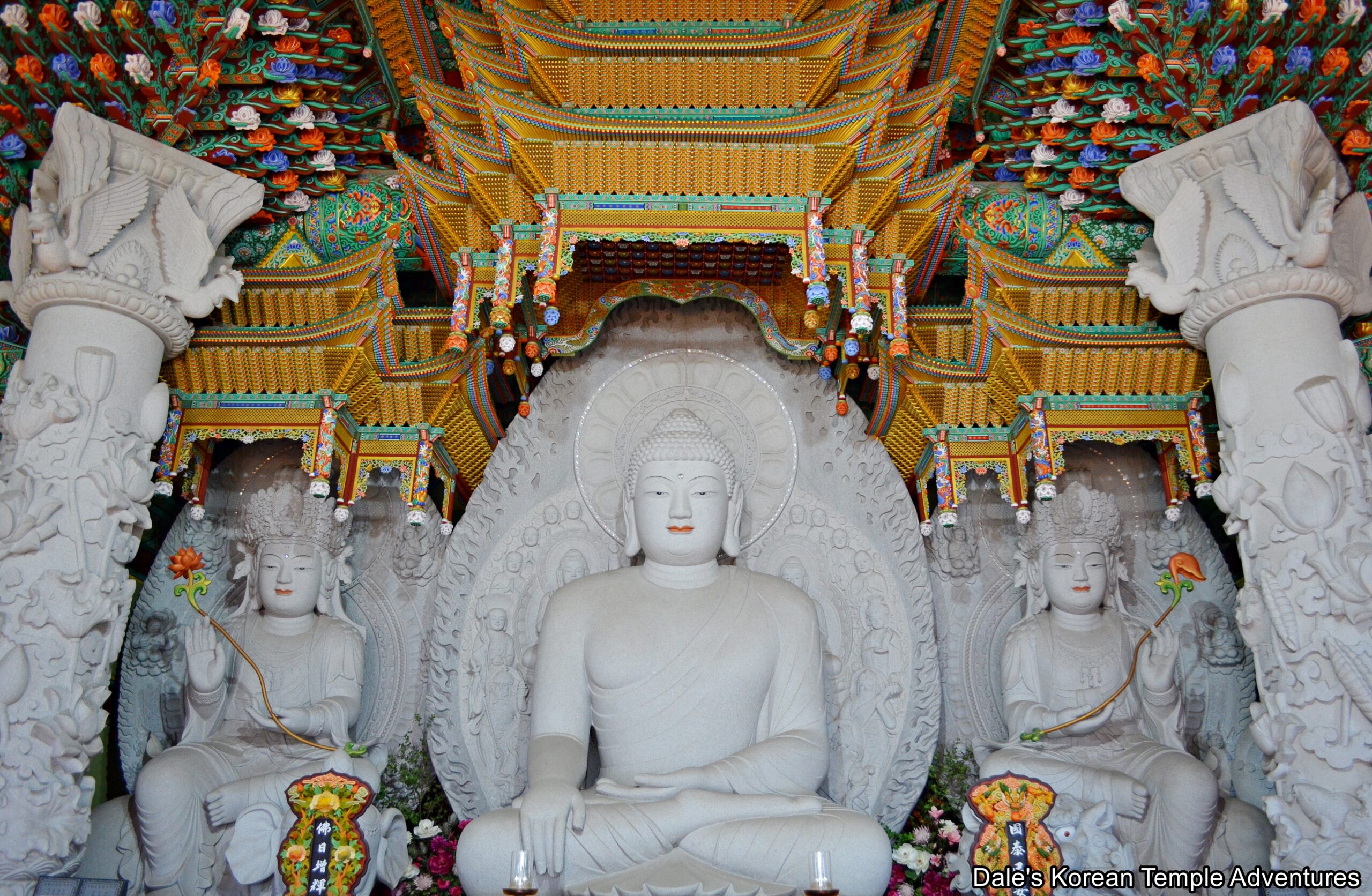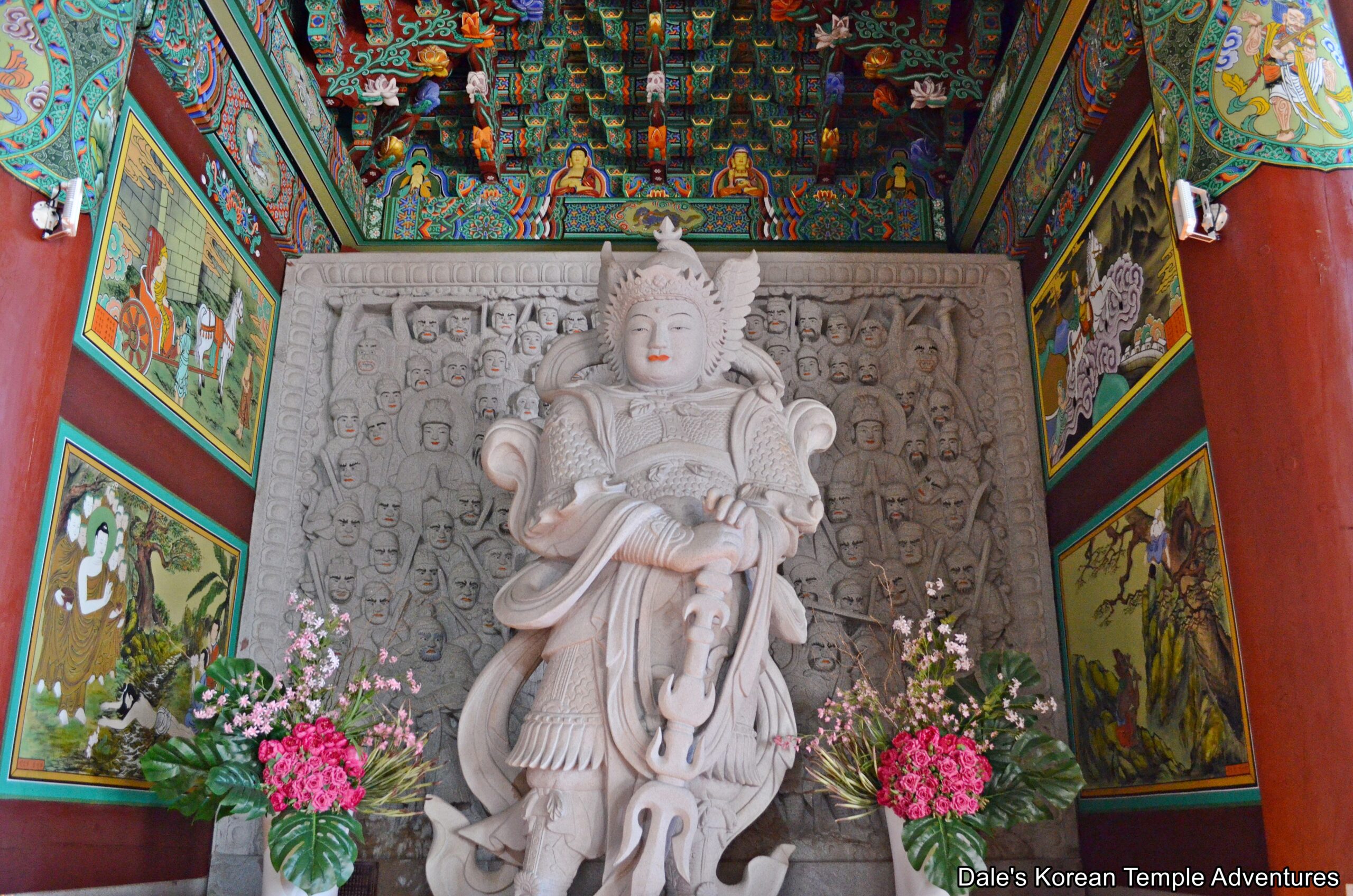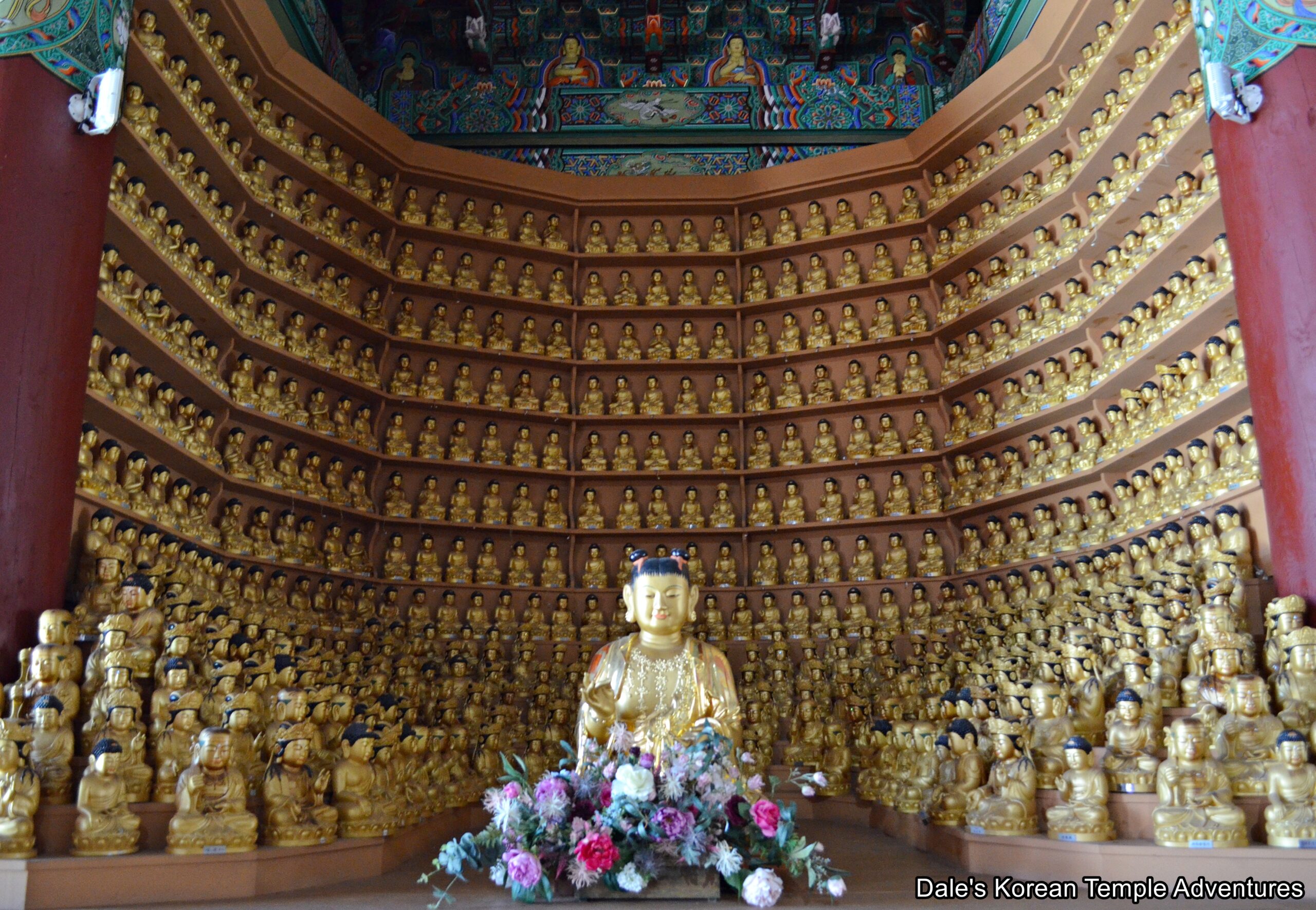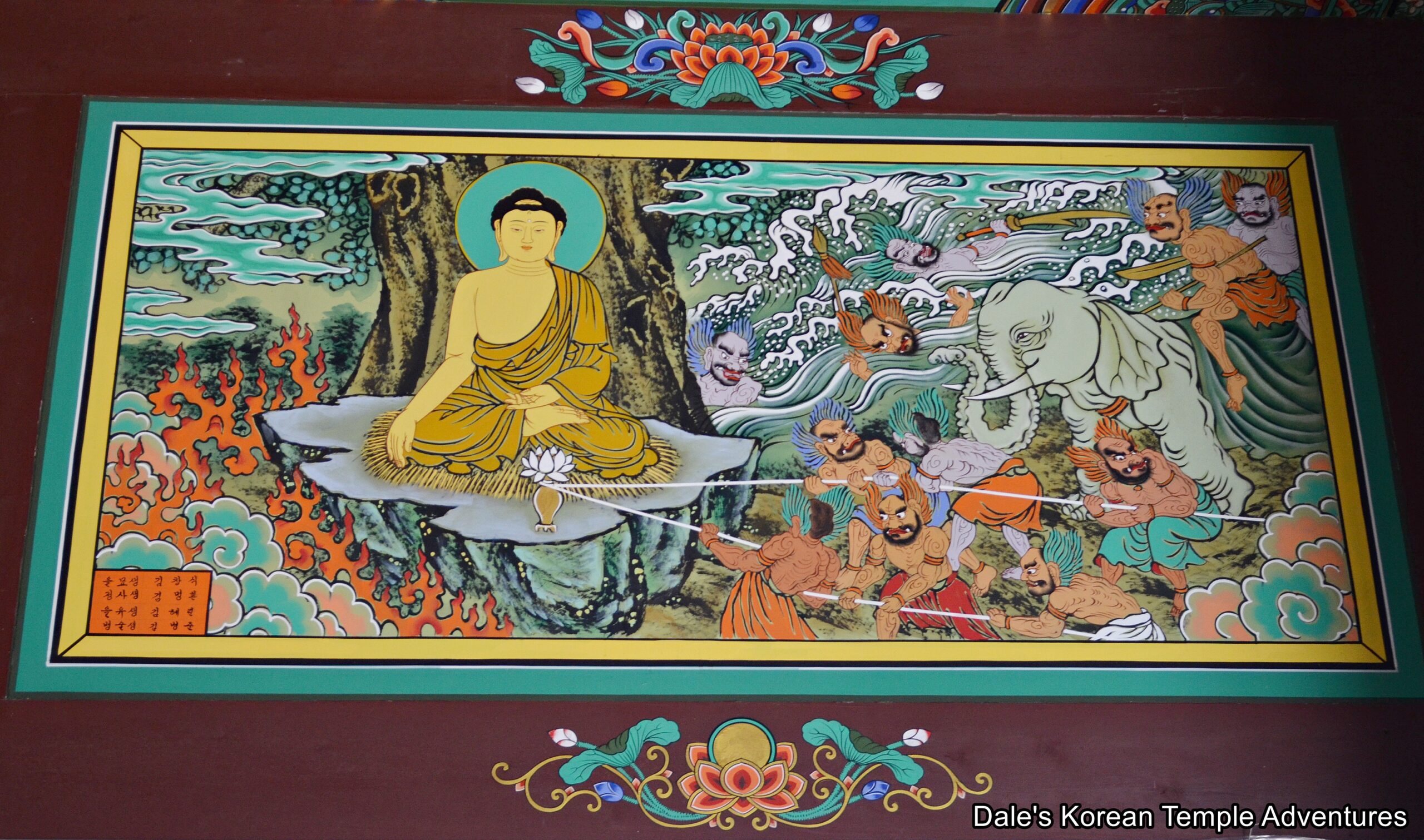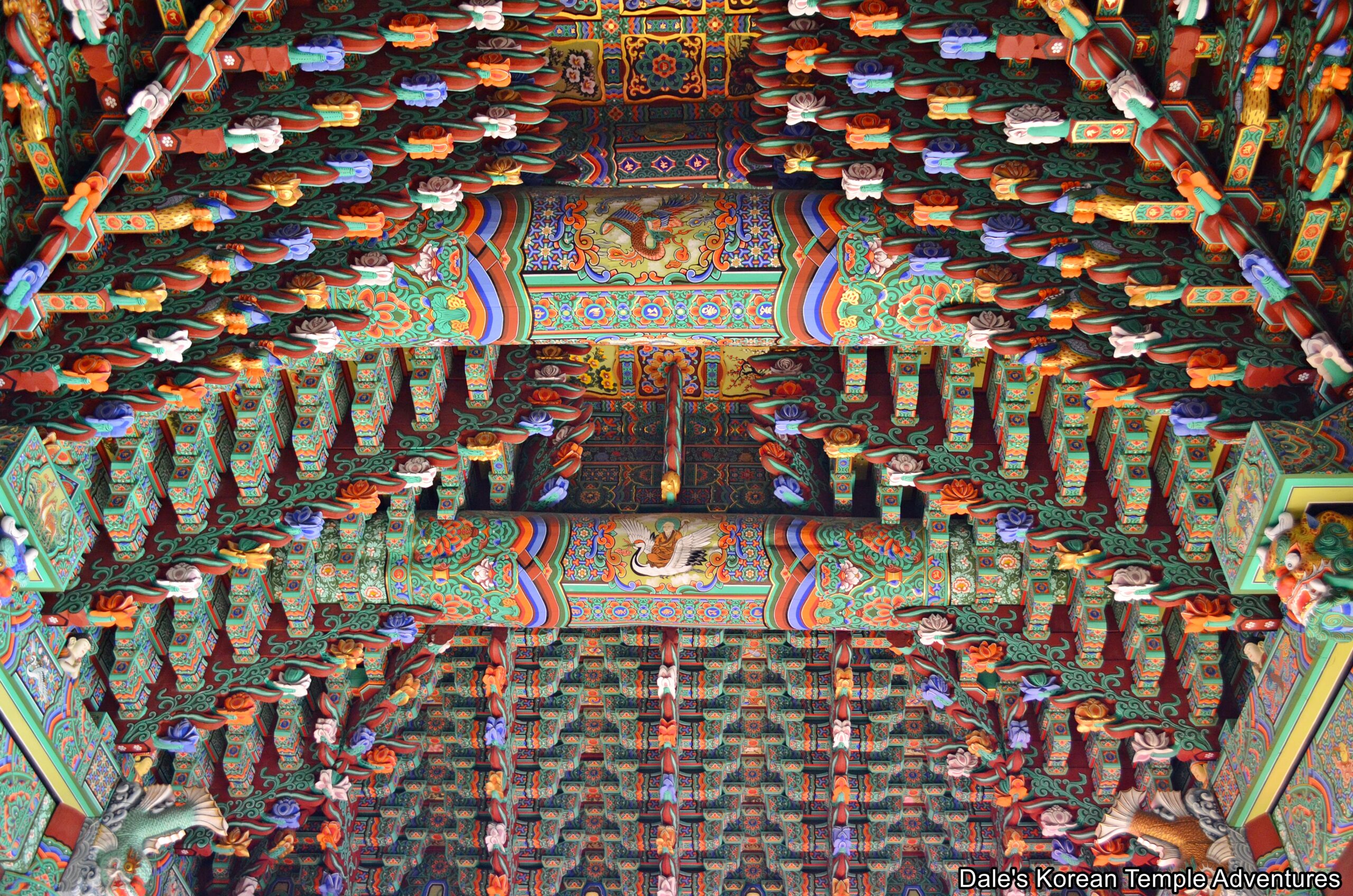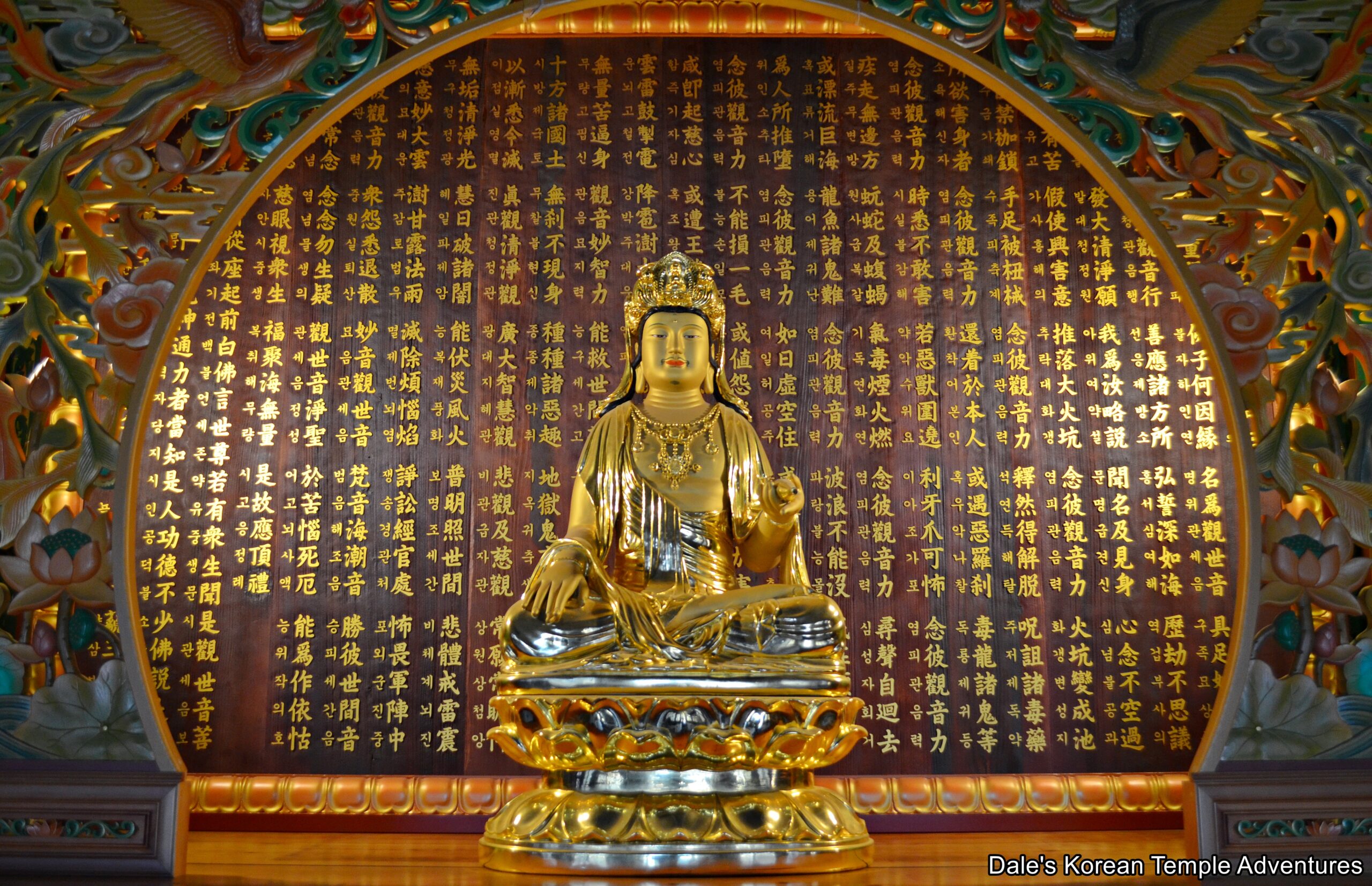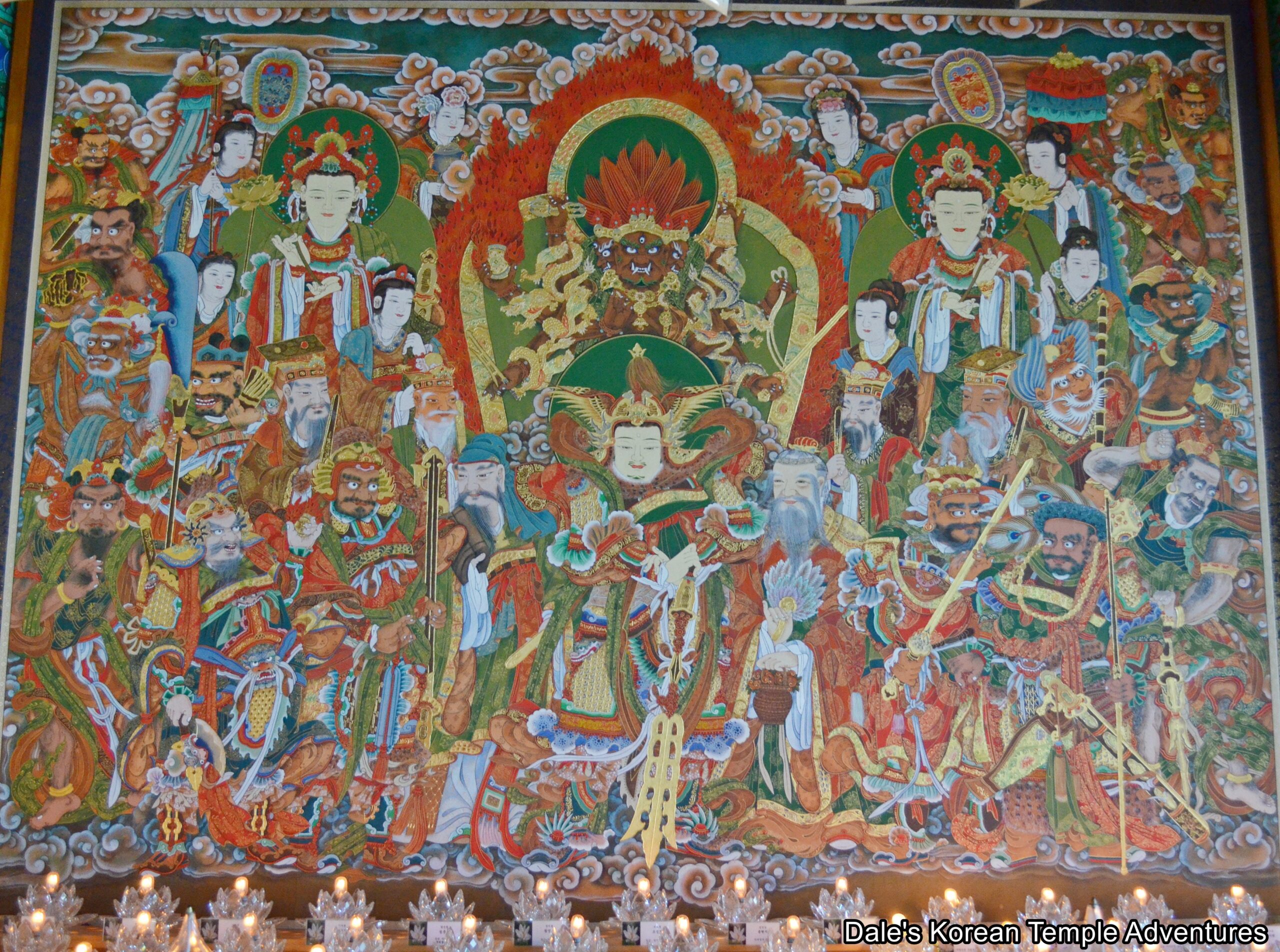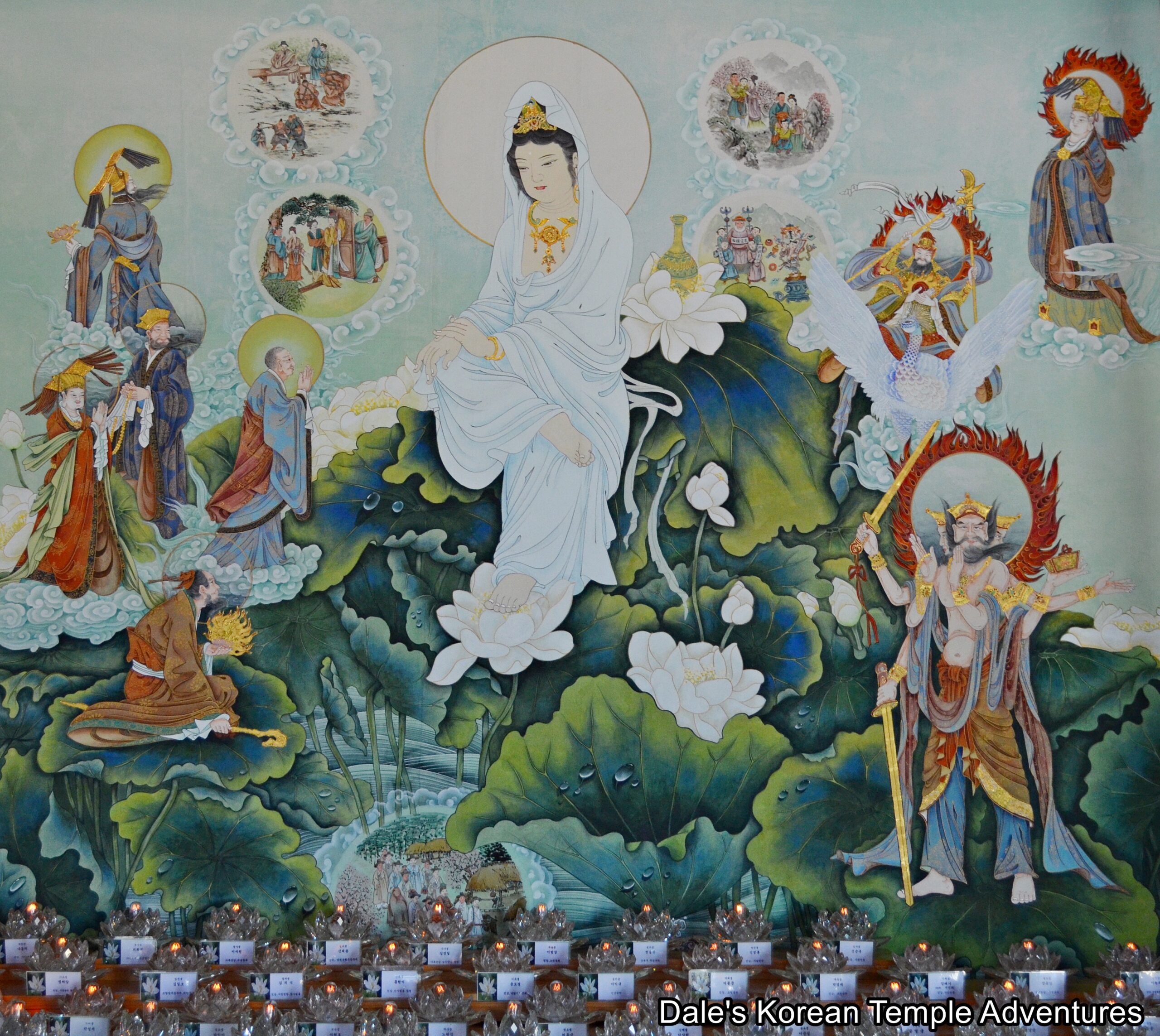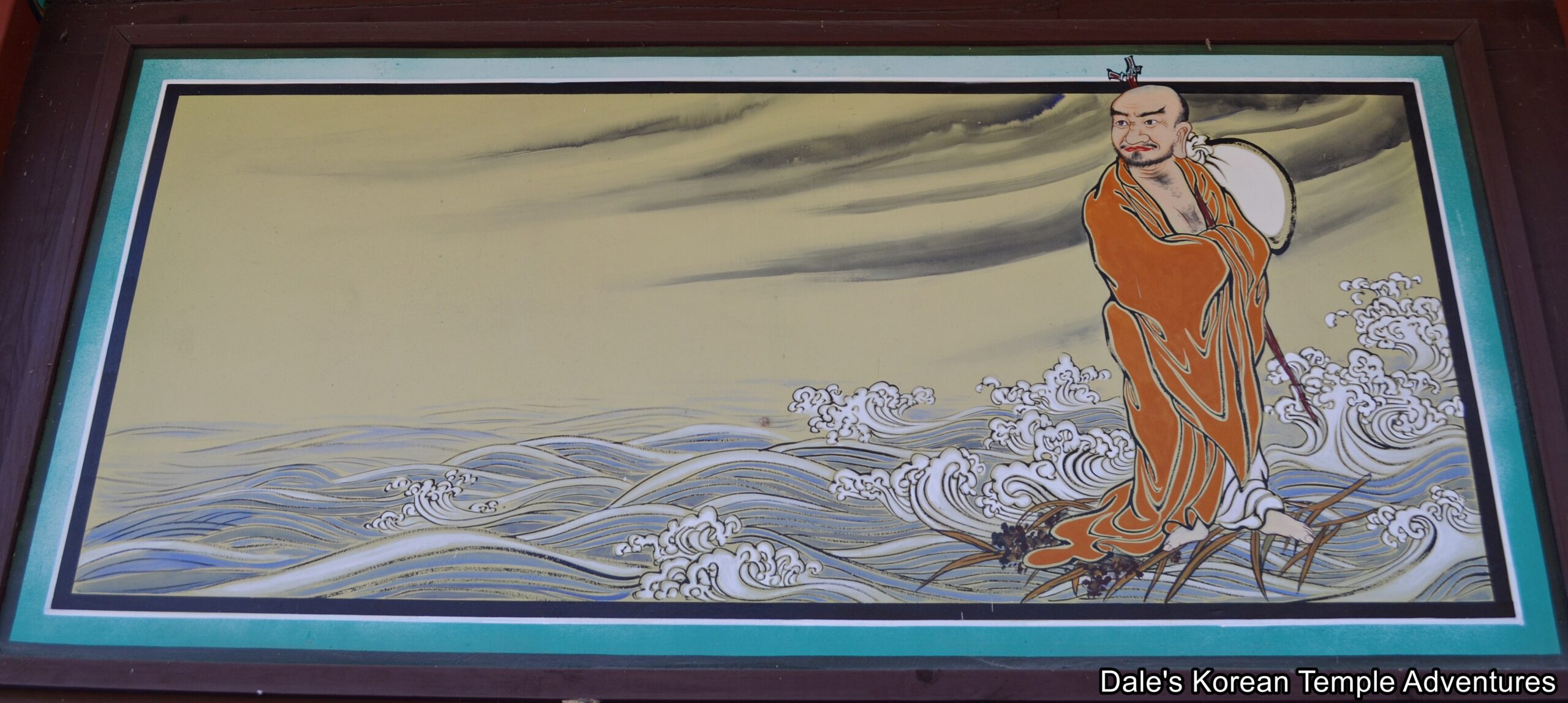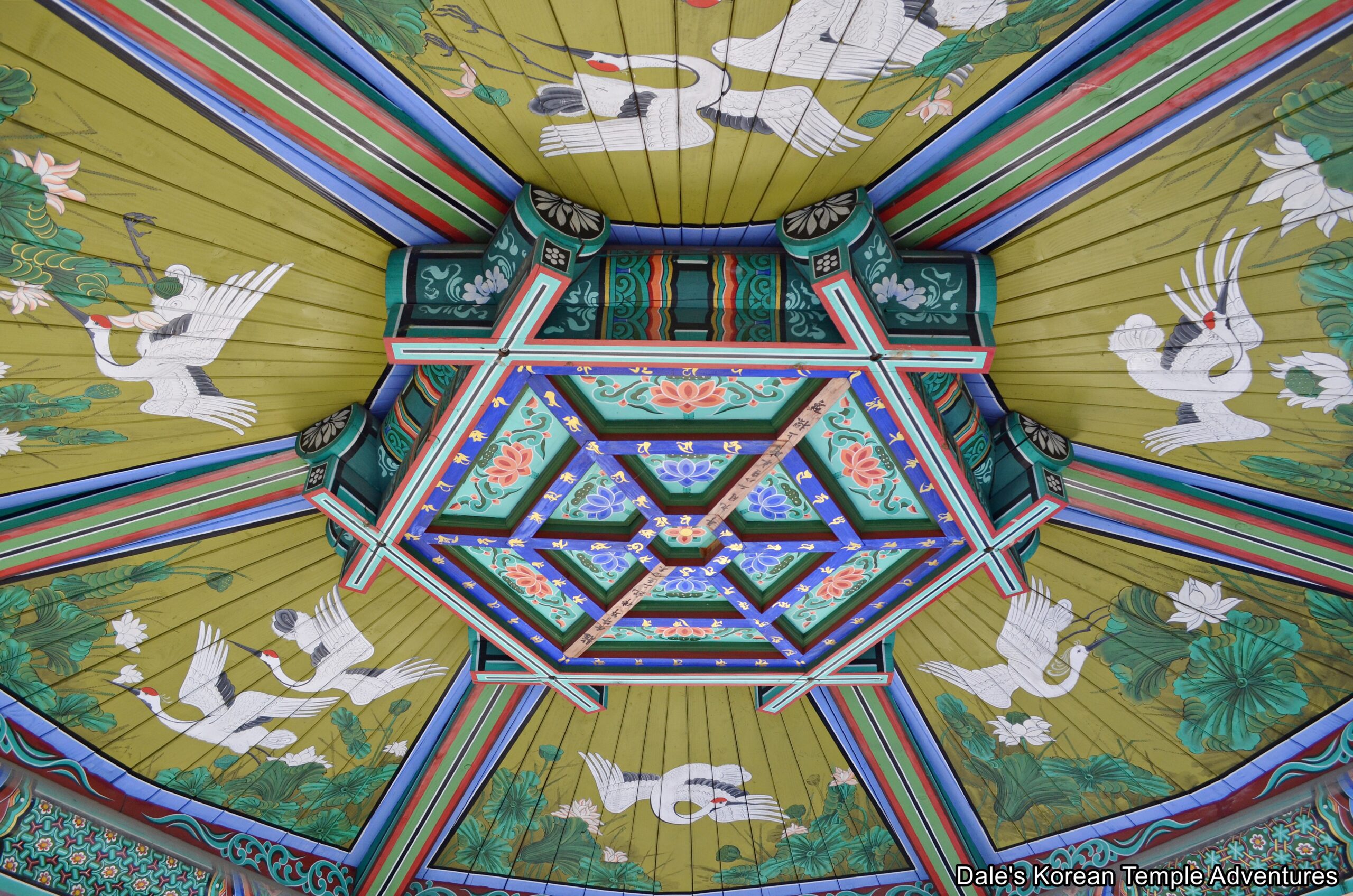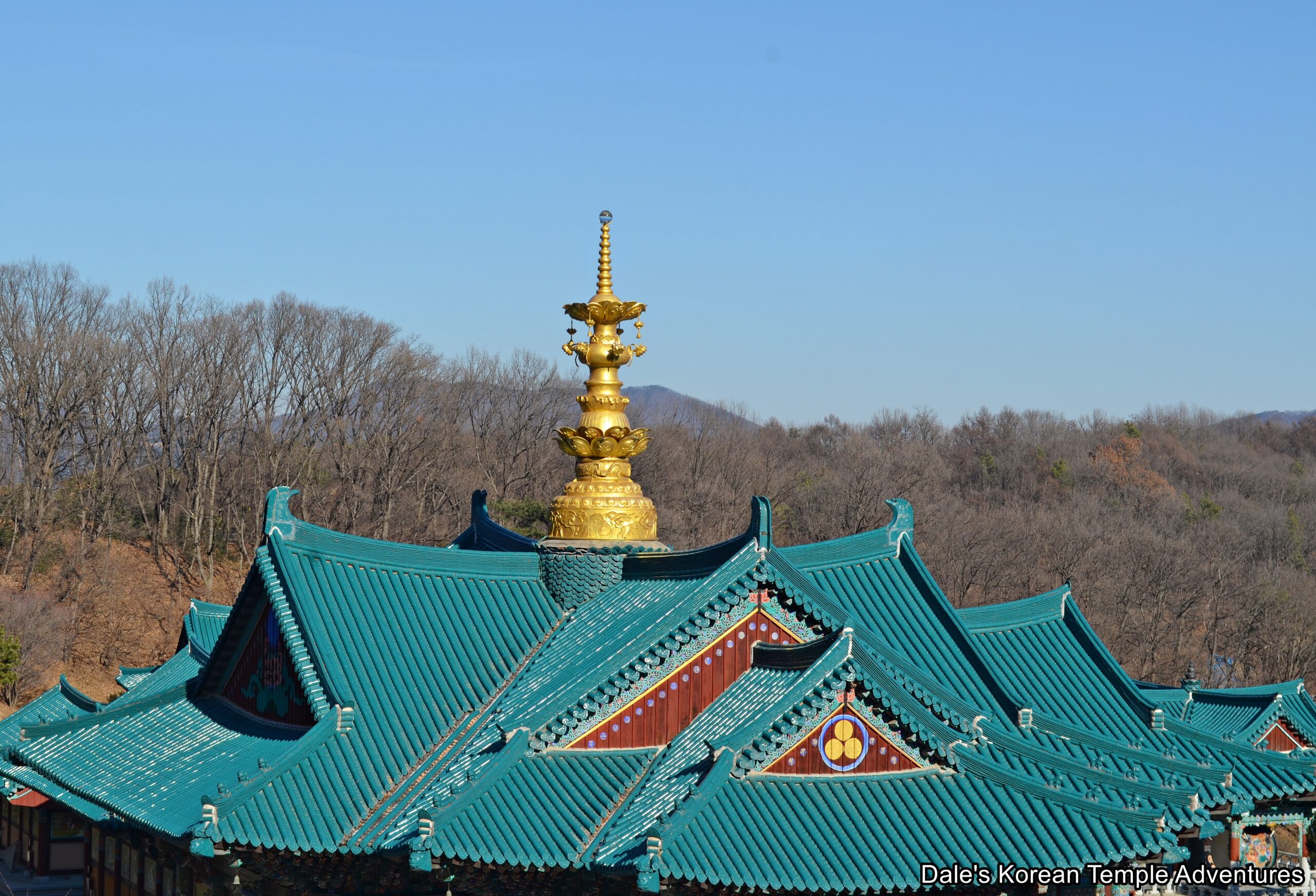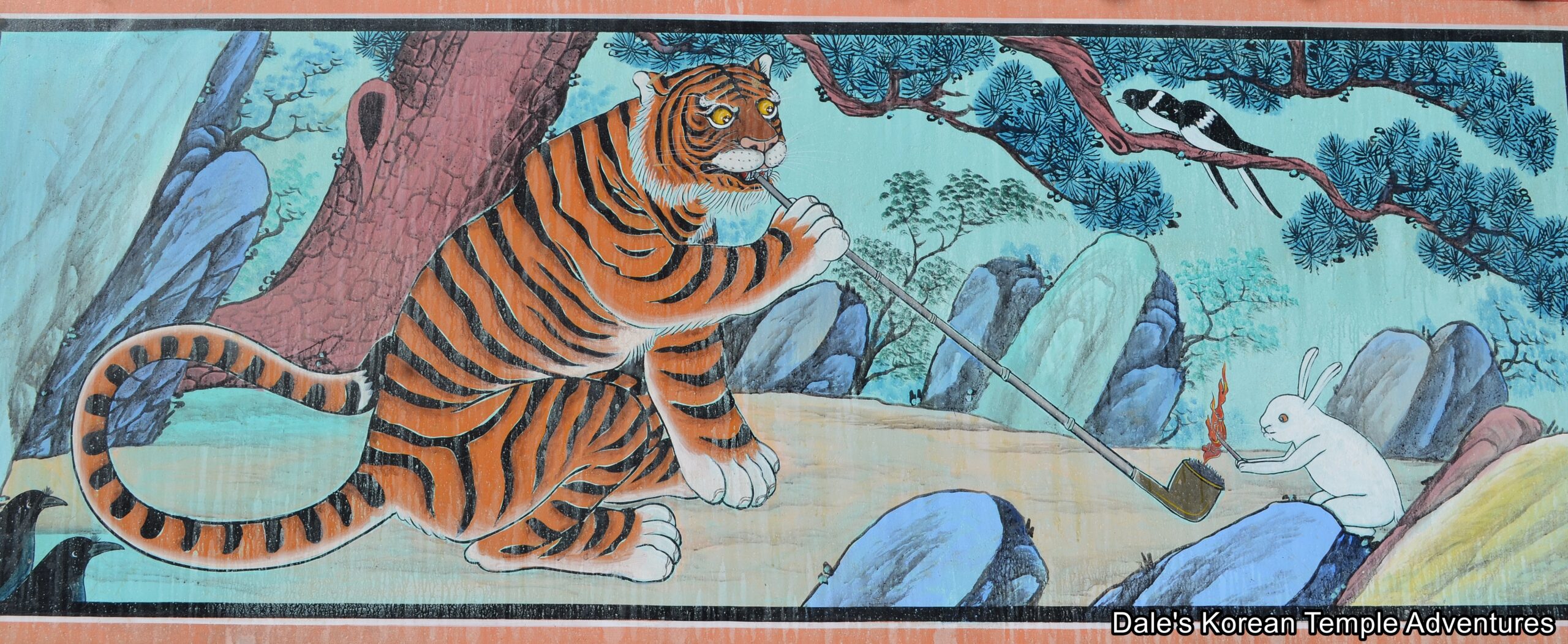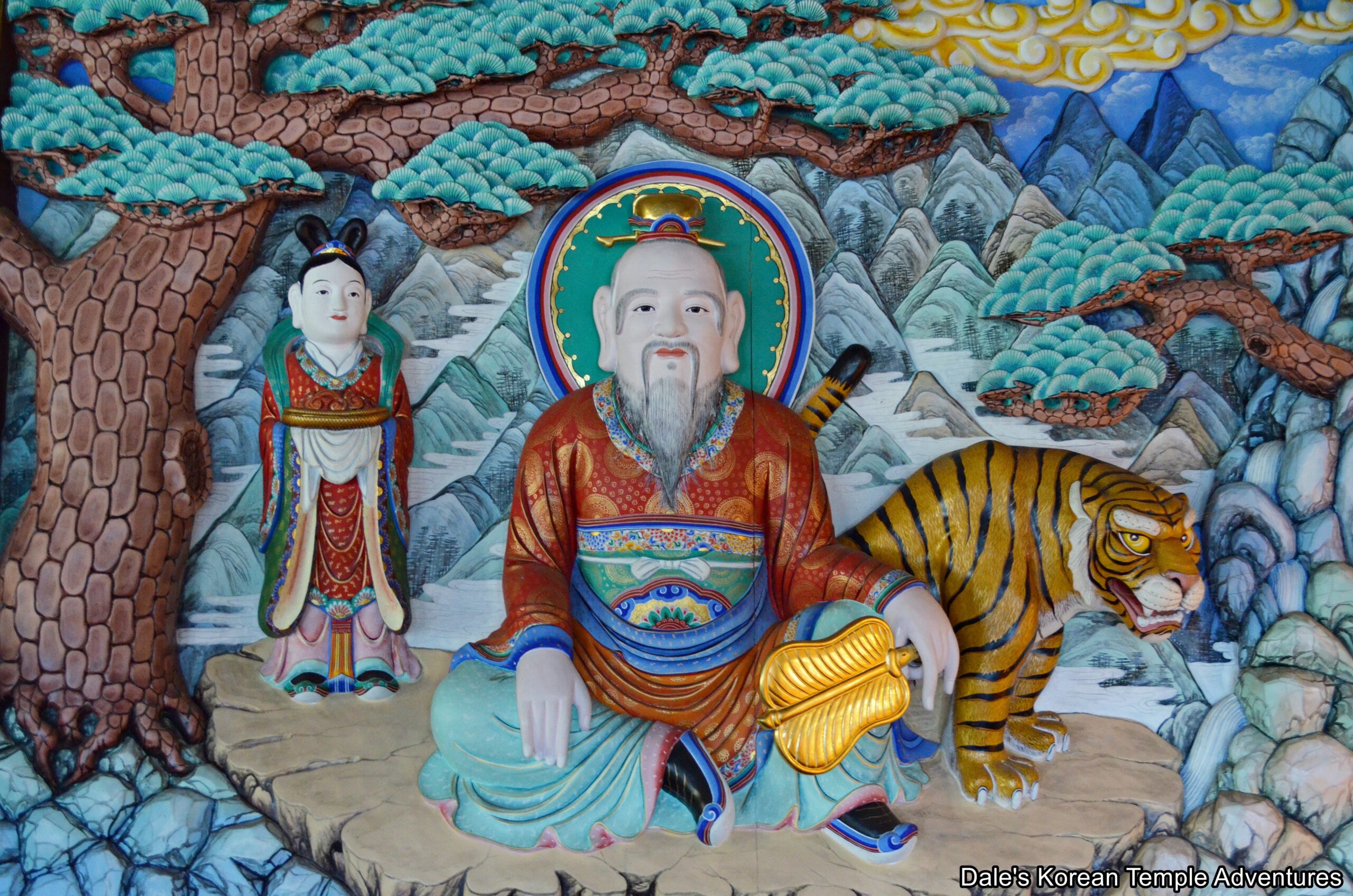Beopryunsa Temple – 법륜사 (Yongin, Gyeonggi-do)
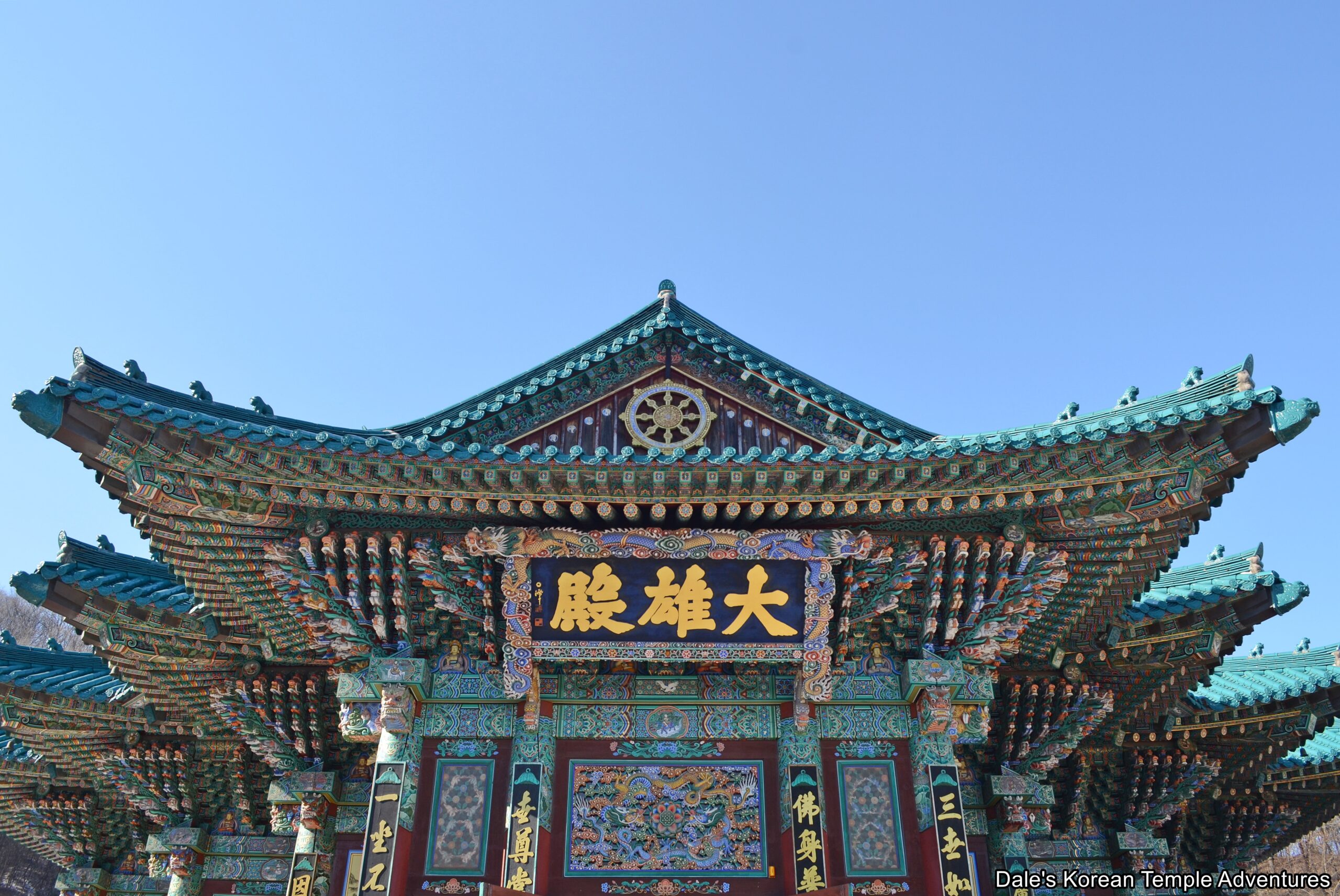
Temple History
Beopryunsa Temple is located to the east of Mt. Munsusan (403.2 m) in the southeastern part of Yongin, Gyeonggi-do. Beopryunsa Temple, which is also sometimes spelled in English as Beomryunsa Temple, was first conceived of in 1996 when Sangryun dreamed of Gwanseeum-bosal (The Bodhisattva of Compassion). Ten years later, and in 2005, Beopryunsa Temple was first opened. In 2008, Beopryunsa Temple started to conduct the Temple Stay program at its temple. Some 11 years later, this program was selected as the best Temple Stay program in Korea in 2019.
Because the temple is so new, it only consists of one protected property. This is the “Three-Story Stone Pagoda of Beopryunsa Temple in Yongin,” which is Gyeonggi-do Cultural Materials #145.
Temple Layout
As you first make your way up towards the main temple courtyard, you’ll pass by a rather large Iljumun Gate. Passing by this colourful entry gate, you’ll next come to the expansive temple parking lot. On either side of a long stone set of stairs are two administrative offices at Beopryunsa Temple. It’s only after mounting these stairs that you’ll find the Beomjong-gak Pavilion. Housed inside this large bell pavilion are the four traditional Buddhist percussion instruments including a rather large Dharma Drum, which is known as a “Beopgo” in Korean.
Slightly to the left, your eyes will instantly be drawn to the large Daeung-jeon Hall at Beopryunsa Temple. In total, the main hall is some 430 square metres in size. Additionally, it’s shaped like the Chinese character 亞, which means “ah.” The hall is made from indigenous red pine trees from Mt. Baekdusan. Nearing the Daeung-jeon Hall, and at the foot of the stairs leading up to the main hall, you’ll find a stone relief of a Gwimyeon (Monster Mask) as well as intertwined lotus flowers. Overhead of the main entry to the Daeung-jeon Hall is a masterful wood relief of a yellow and blue dragon. The exterior walls are adorned with an assortment of various murals that include various Buddhas and Bodhisattvas, as well as the Shimu-do (The Ox-Herding Murals). Also adorning the exterior of the main hall are stout dragonheads, bluish-green roof tiles, as well as a large golden finial atop the Daeung-jeon Hall.
But as beautiful as the exterior is to the Daeung-jeon Hall, the interior is just as beautiful, if not more so. Inside the cavernous interior of the main hall, you’ll find a large stone triad on the main altar. The central image of Seokgamoni-bul (The Historical Buddha) weighs an impressive 53 tons, and it’s also three times bigger than the statue inside the historic Seokguram Grotto in Gyeongju. Joining this central image on either side are stone images of Bohyeon-bosal (The Bodhisattva of Power) and Munsu-bosal (The Bodhisattva of Wisdom). Just as a comparison, the image of Munsu-bosal weighs 33 tons. And bookending the main altar are two large stone pillars. The body of the pillars are adorned in reliefs of lotus flowers, while the top of the pillars are adorned with multiple reliefs of phoenixes. The entire main altar rests beneath a large, golden canopy. To the right of the main altar, you’ll find a standing stone image dedicated to Dongjin-bosal (The Bodhisattva that Protects the Buddha’s Teachings). This statue stands in front of a stone relief of the Shinjung Taenghwa (Guardian Mural). In total, there are 104 guardians in this relief. And to the left of the main altar, you’ll find a child-like image of Munsu-bosal surrounded by various images of Buddhas and Bodhisattvas. If you look up at the ceiling of the structure, you’ll see one of the most intricate and colourful ceilings inside any shrine hall in Korea. Adding to this beauty on the walls are the Palsang-do (The Eight Scenes from the Buddha’s Life).
To the right of the Daeung-jeon Hall is the Gwaneum-jeon Hall. And out in front of this shrine hall is the “Three-Story Stone Pagoda of Beopryunsa Temple in Yongin.” This three-story pagoda was first located in Guro-dong, Seoul. It was later moved to its present location. The pagoda is small and has a single-layer base. Each of the three roof stones for the body are quite short and steep for its overall size. Also, a new finial has been attached to the top of the pagoda. Based upon its style, it appears as though this pagoda was first constructed during the Goryeo Dynasty (918-1392).
As for the Gwaneum-jeon Hall that stands behind the “Three-Story Stone Pagoda of Beopryunsa Temple in Yongin,” the exterior walls are adorned with various incarnations of Gwanseeum-bosal (The Bodhisattva of Compassion). Stepping inside the Gwaneum-jeon Hall, you’ll find a shrine hall filled with beautiful Buddhist artistry. The main altar is occupied by a solitary image of Gwanseeum-bosal, who is surrounded on all sides by a colourful enclosure and a golden canopy overhead. This statue is backed by golden hanja script of a portion of the Lotus Sutra. And this statue is fronted by wooden panels of lotus flowers and phoenixes. Hanging on the far right wall is a large Shinjung Taenghwa (Guardian Mural). The entire interior of the Gwaneum-jeon Hall is adorned with masterful paintings of the Bodhisattva of Compassion.
To the right of the Gwaneum-jeon Hall is the Josa-jeon Hall. The exterior walls are filled with paintings dedicated to images of Wonhyo-daesa (617-686 A.D.) and Uisang-daesa (625-702 A.D.), as well as the Bodhidharma. Stepping inside the Josa-jeon Hall, you’ll find two pictures of the temple’s founders on the main altar. And to the right of the Josa-jeon Hall is a large residential area for nuns. To the left of the Daeung-jeon Hall, on the other hand, is the Temple Stay building, as well as a beautiful pavilion that houses a dragon-head water fountain with spring water pouring forth from it. And if you look up at the ceiling of the pavilion, you’ll notice a ceiling filled with beautiful painted images of white cranes.
Backing this wooden pavilion is the Geukrakbo-jeon Hall. The exterior walls are filled with images of redemption and Buddhist hell. Stepping inside the Geukrakbo-jeon Hall, you’ll find a main altar occupied by a triad centred by Amita-bul (The Buddha of the Western Paradise). This central image is joined on either side by Jijang-bosal (The Bodhisattva of the Afterlife) and Gwanseeum-bosal. This main altar triad is then joined on both sides by intricate paintings dedicated to the Siwang (The Ten Kings of the Underworld).
To the rear of the Geukrakbo-jeon Hall, and past a stone statue of Podae-hwasang (The Hempen Bag), you’ll find a trail that leads up to the Samseong-gak Hall. Along the way, you’ll pass by a standing statue of the Bodhidharma. Adorning the exterior of the Samseong-gak Hall are murals dedicated to Dokseong (The Lonely Saint), three paintings dedicated to Chilseong (The Seven Stars), and a minhwa of “Tiger Smoking a Pipe.” Stepping inside the Samseong-gak Hall, you’ll see three colourful, wooden reliefs dedicated to Chilseong, Dokseong, and Sanshin (The Mountain Spirit).
How To Get There
From the Yongin Intercity Bus Terminal, you can take either Bus #10-3 or Bus #10-4 to get to Beopryunsa Temple. The bus ride will last some 24 stops over 25 minutes. You’ll need to get off at the “Wonsam-myeonhaeng-jeongbokji-senteo-hacha – 원삼면행정복지센터 하차.” The bus will drop you off right in front of the temple grounds.
Overall Rating: 8/10
For a modern temple, you really can’t do much better than Beopryunsa Temple. The beauty of the temple starts with the amazing Daeung-jeon Hall, but it certainly doesn’t end there. The exterior walls to this beautiful hall are filled with stunning murals. And as beautiful as the exterior is, the interior is even more beautiful with its massive granite main altar statues, as well as the intricate woodwork up near the ceiling of the structure. In addition to the Daeung-jeon Hall, the interior of the Gwaneum-jeon Hall is one of the most impressive in Korea with its main altar golden hanja script and the masterful murals dedicated to the Bodhisattva of Compassion adorning all of the interior walls. Other things to keep a look out for are the murals adorning the exterior of the Samseong-gak Hall, the Siwang (The Ten Kings of the Underworld) paintings inside the Geukrakbo-jeon Hall, and the “Three-Story Stone Pagoda of Beopryunsa Temple in Yongin.” All make for a beautiful visit to Beopryunsa Temple.

